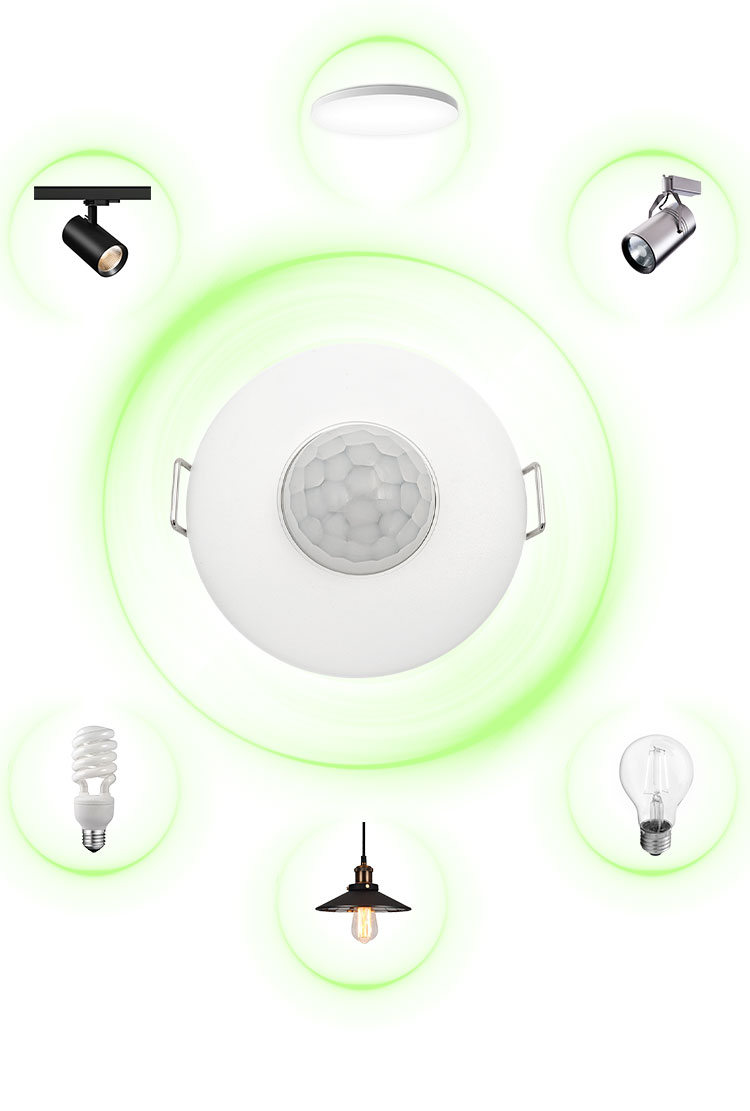

Microwave vs PIR Sensors: In-Depth Function Analysis and Performance Comparison Guide
1. Microwave Sensor: Working Principle and Key Features
Microwave motion sensors (also called radar sensors or RF sensors) operate by emitting high-frequency electromagnetic waves (typically 5.8GHz or 10.525GHz) and analyzing the reflected signals. The Doppler effect causes frequency shifts when objects move, which the sensor detects to identify motion.
Key Advantages:
1. Strong penetration capability (works through non-metallic materials like drywall and glass)
2. Unaffected by environmental temperature variations
3. Long detection range (typically 10-20 meters)
4. High sensitivity to minor movements
5. Excellent resistance to environmental interference (light, dust, etc.)
2. PIR Sensor: Working Principle and Key Features
Passive infrared sensors detect changes in infrared radiation emitted by objects. Human bodies at 36-37°C emit specific infrared wavelengths (around 9-10μm), and the sensor triggers when it detects changes in this radiation pattern caused by movement.
Key Advantages:
1. Passive detection (no energy emission, only reception)
2. High accuracy in distinguishing humans from other objects
3. Low power consumption (ideal for battery-operated devices)
4. Cost-effective solution with mature technology
5. Reliable performance in normal temperature conditions
3. Head-to-Head Performance Comparison
| Feature | Microwave Motion Sensor | PIR Sensor |
| Working Principle | Active RF emission and reflection analysis | Passive infrared radiation detection |
| Material Penetration | Excellent (through non-metals) | None (requires line-of-sight) |
| Temperature Stability | Unaffected by temperature | Performance degrades in extreme heat |
| Detection Range | Long (10-20m) | Medium (5-12m) |
| Sensitivity | High (detects subtle movements) | Moderate (needs significant IR change) |
| Interference Resistance | Strong against environmental factors | Vulnerable to heat sources/sunlight |
| Power Consumption | Relatively high | Very low |
| Cost | Higher | More affordable |
| Installation | Can be concealed | Requires direct line-of-sight |
4. Recommended Applications
Best Uses for Microwave Sensors:
- Applications requiring detection through barriers
- Industrial environments with temperature fluctuations
- Scenarios needing micro-movement detection
- Large area coverage requirements
Best Uses for PIR Sensors:
- Home security and lighting control
- Applications requiring human/object differentiation
- Energy-efficient and battery-powered devices
- Cost-sensitive projects
5. Dual-Technology Sensors
For high-security applications like banks or museums, hybrid microwave+PIR sensors combine both technologies to minimize false alarms through dual verification.
Conclusion: Choosing Between Microwave and PIR Sensors
Microwave sensors excel in penetration capability and environmental adaptability, while PIR sensors offer better target discrimination and cost efficiency. Understanding these key differences will help you select the optimal motion detection solution for your specific requirements.








